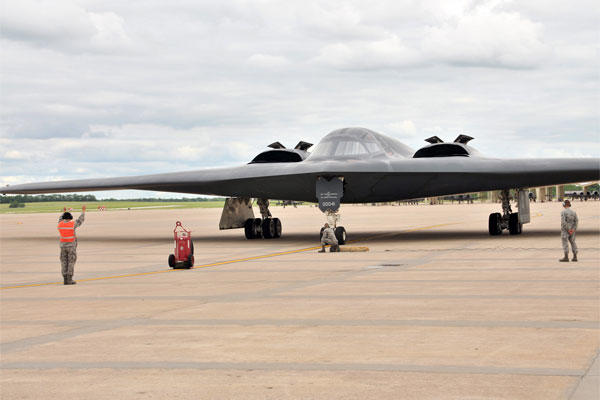WHITEMAN AFB, Mo -- Only a small percentage of B-2 pilots have ever flown over 1,500 hours, but that is a milestone Lt. Col. Michael Means, 131st Bomb Wing Chief of Safety, surpassed nearly 2 years ago in 2011.
Means has spent the last four years flying the B-2 as a member of the 131st team after eight years as an active duty 509th Bomb Wing pilot, and with 1,765.8 hours logged in the B-2, he holds the record for the second most hours flown ever.
"With over twenty-three years of service to this nation, Means has seen and done it all, and he's been the operations expert in hours, experience and sage mentoring for the younger pilots," said Lt. Col. Michael Pyburn, 131st Bomb Wing Operations Group commander. "In fact, there are only four pilots that have ever reached 1,500 B-2 hours, none of which are still flying the B-2."
The 131st and 509th Bomb Wings' collaboration with each other has been key in the success of the total force integration at Whiteman Air Force Base. Means' journey has given him a unique perspective that few have.
"His B-2 flying hours represent 12 years and hundreds of sorties with hundreds of B-2 pilots, from the newest initial qualification graduate to the wing commanders of both the 131st and 509th Bomb Wings," said Lt. Col. Thomas Hatley, 110th Bomb Squadron Commander. "The current crop of B-2 aviators will carry his imprint for many years to come as they mature and progress in their Air Force careers."
Means became a commissioned officer in the Air Force after participating in the ROTC program at the University of Kansas, and he will retire after 23 years of service, logging 4,466 flying hours in multiple aircraft.
He began his flying career on the B-52 Stratofortress, then moved on to the T-38 Talon as an instructor pilot before finishing on the B-2 as a Missouri Air National Guard member.
As Means retires, his family carries on the military tradition as both of his sons are members of the Air National Guard with the 190th Air Refueling Wing at Forbes Field, Kansas.
"I transferred to the guard for several reasons: to stay at Whiteman to continue flying the B-2 and for promotion opportunity," Means said.
This created many opportunities for Means to progress in the advanced B-2 weapon system.
"A lot of times we take for granted the opportunities we are given. To say that I've flown one of the world's premier aircraft is exciting," Means said. "When people ask me, 'What is it that you do?' it's not every day that somebody says, 'I'm a B-2 pilot.' That in itself has been a privilege."
As the 131st chief of wing safety, Means was able to utilize his experience from his active duty service to overcome the obstacles that presented themselves.
"There was some apprehension about how the 131st was going to fit in," Means said. "However, the noncommissioned officers of the 131st have ensured integration into the bomb wing mission."
Despite facing the growing pains associated with change, Means said the partnerships that have been forged between the 131st and 509th have laid the groundwork and provided a model for future units tasked with TFI.
With such a robust career, Means made it a point to always be open to opportunity.
"It wasn't necessarily a drive of mine to be a B-2 pilot," Means said. "Throughout my career, the opportunities presented themselves to me. The big thing is not to set yourself limits. If you have goals, set them high because you never know what is in store for you."




























